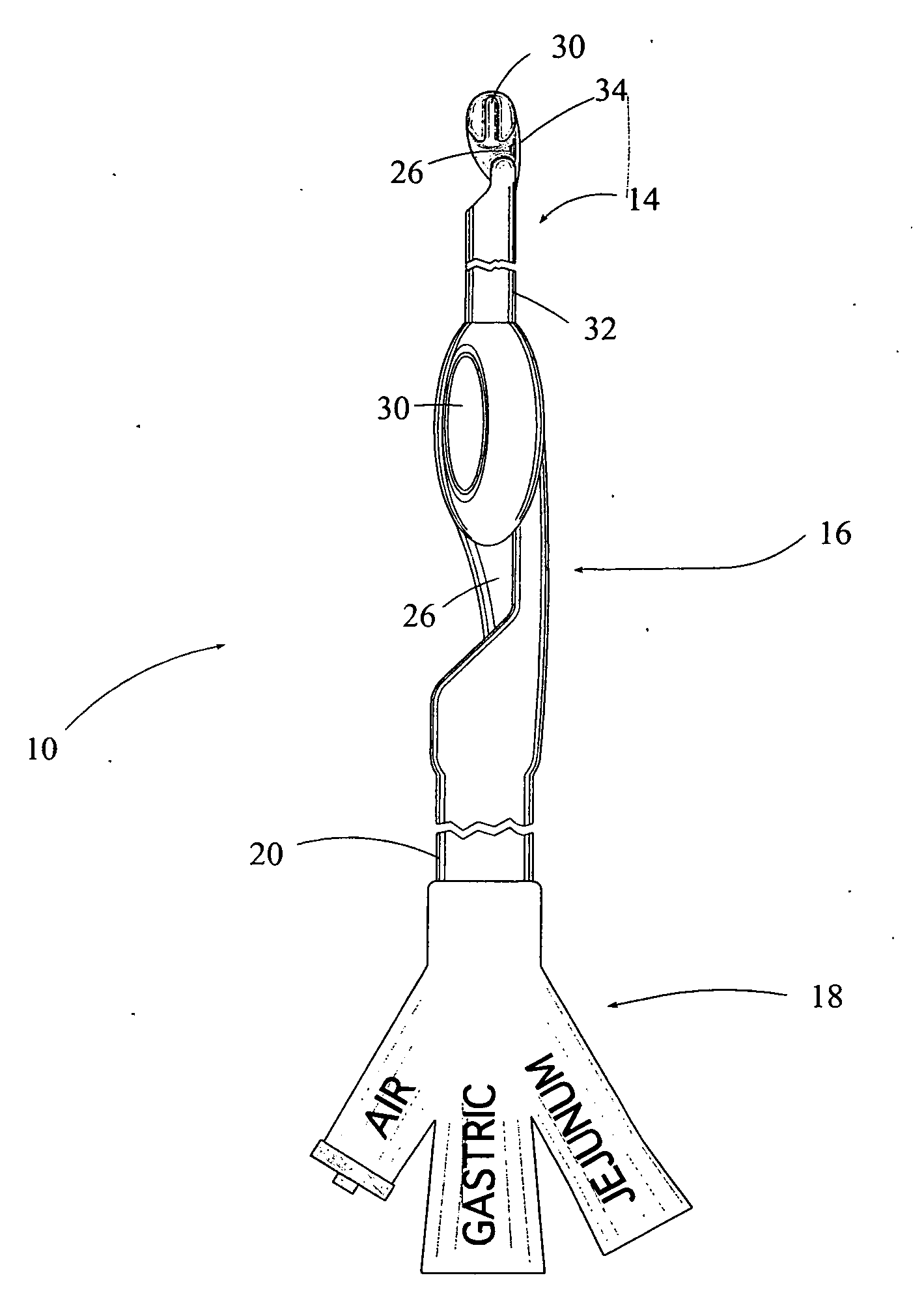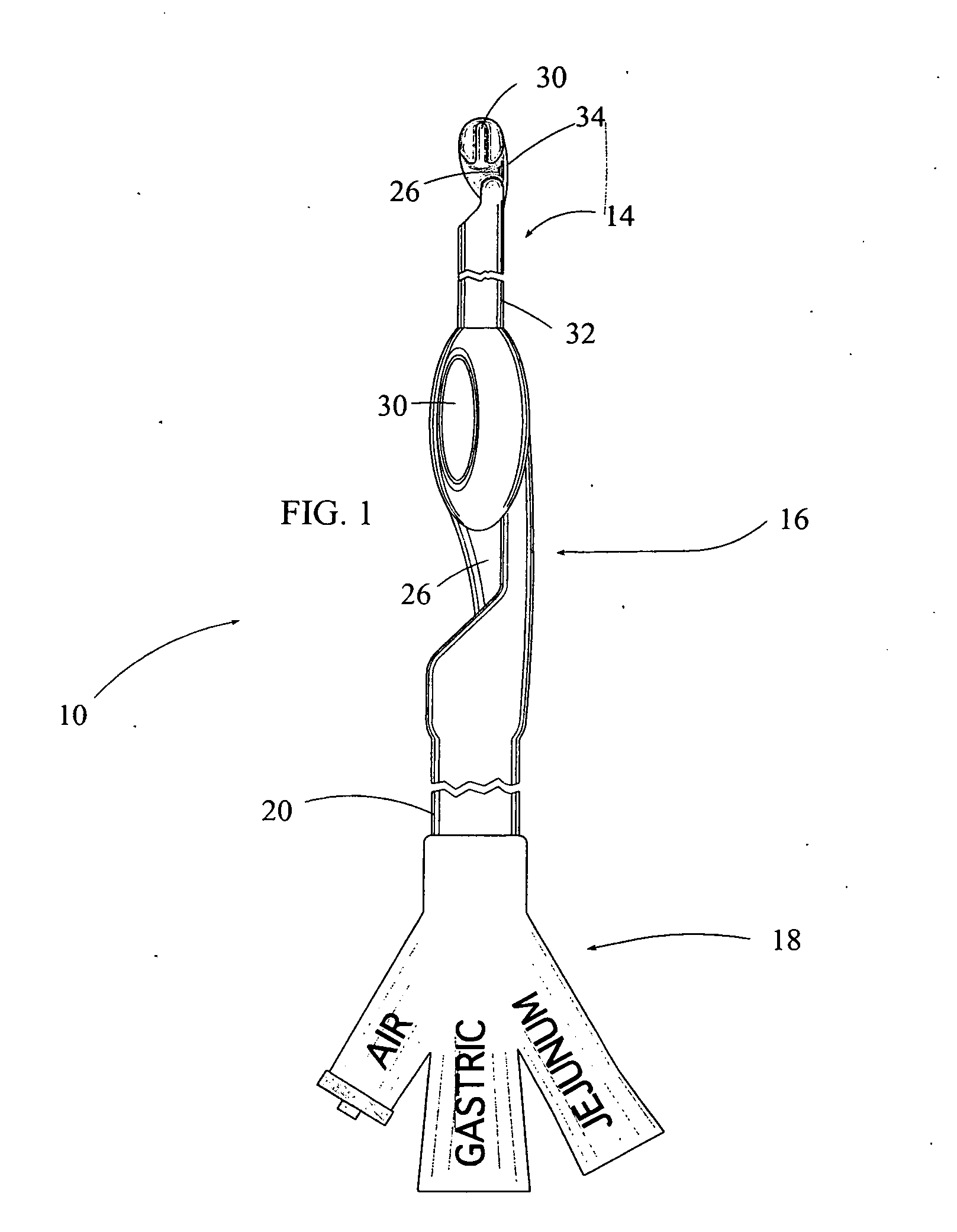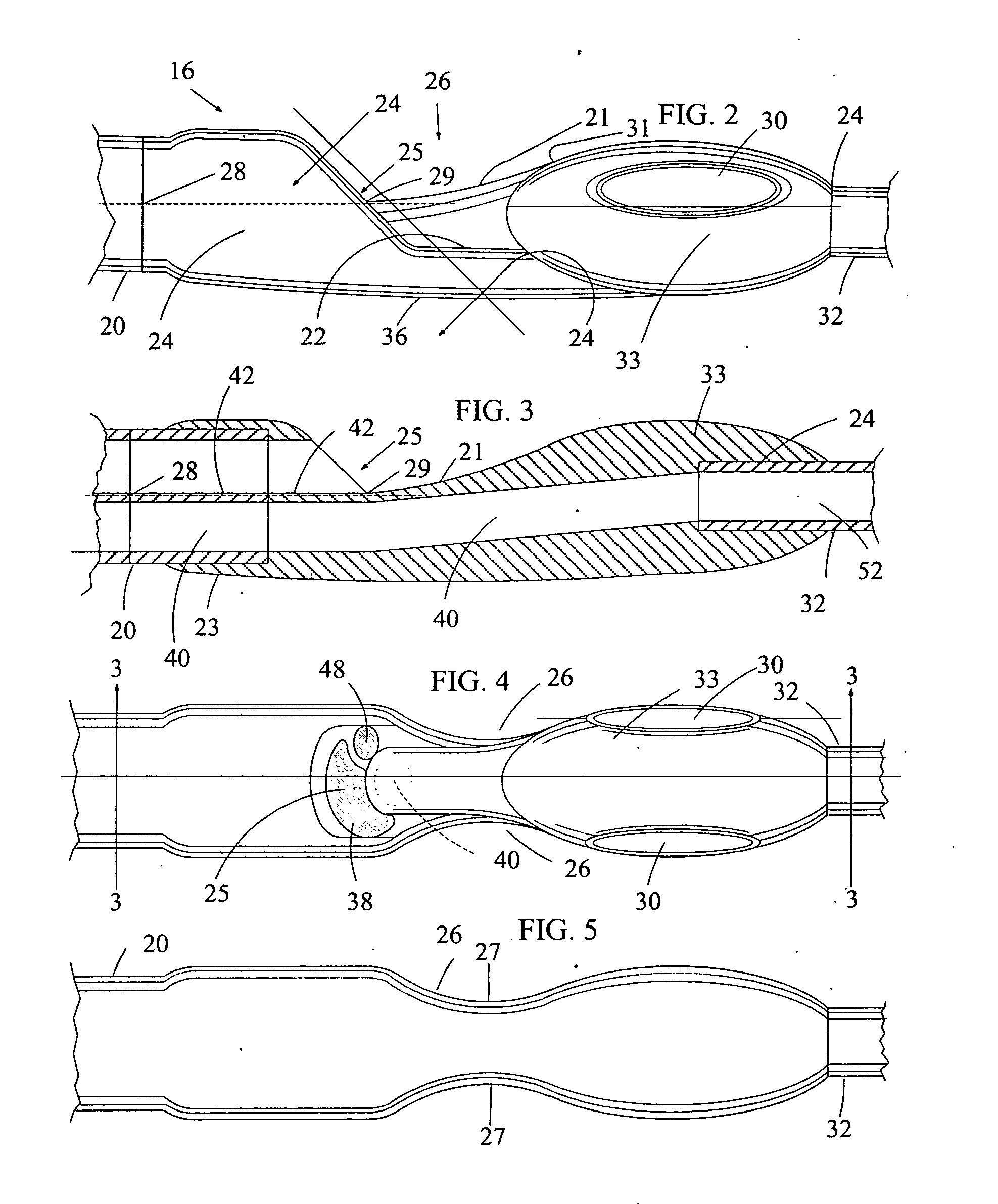Jejunal feeding catheter
a catheter and jejunal technology, applied in the field of catheters, can solve the problems of not being able to immediately enter the feeding tube of any patient, and achieve the effect of increasing the size of the recessed area
- Summary
- Abstract
- Description
- Claims
- Application Information
AI Technical Summary
Benefits of technology
Problems solved by technology
Method used
Image
Examples
Embodiment Construction
[0077]Reference is now made to the drawings, especially FIGS. 1, 2, 3, 4, and 5. In FIG. 1 the three major invention components are shown. In FIG. 1 the entire assembly 10 consisting of the triple lumen “Y” connector 18, the transitional bolus assembly 16 and the jejunal tip 14 is shown. In FIG. 2 the 16Fr triple lumen tube is shown at 20. This tube 20 for adult or juvenile uses can be either 42″ or 36″ long, depending on the size of the patient. The goal is to place the bolus 16 in close proximity to the pylorus so that the stomach can be aspirated at its emptying point. The tube size disclosed is a 16Fr triple lumen catheter with an outside diameter of 0.216.″ The midport bolus is shown at 16 and is 1.040″ in length. The over-molded bolus is 0.246″ OD. The single lumen jejunal tube 32 exiting the distal end of bolus 16 is an 8Fr single lumen tube with a outside diameter (OD) of 0.124″ and an ID of 0.080″. Its length is 42″ or 36″. Therefore, the full length of the tube is either 7...
PUM
 Login to View More
Login to View More Abstract
Description
Claims
Application Information
 Login to View More
Login to View More - R&D
- Intellectual Property
- Life Sciences
- Materials
- Tech Scout
- Unparalleled Data Quality
- Higher Quality Content
- 60% Fewer Hallucinations
Browse by: Latest US Patents, China's latest patents, Technical Efficacy Thesaurus, Application Domain, Technology Topic, Popular Technical Reports.
© 2025 PatSnap. All rights reserved.Legal|Privacy policy|Modern Slavery Act Transparency Statement|Sitemap|About US| Contact US: help@patsnap.com



